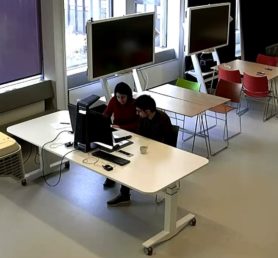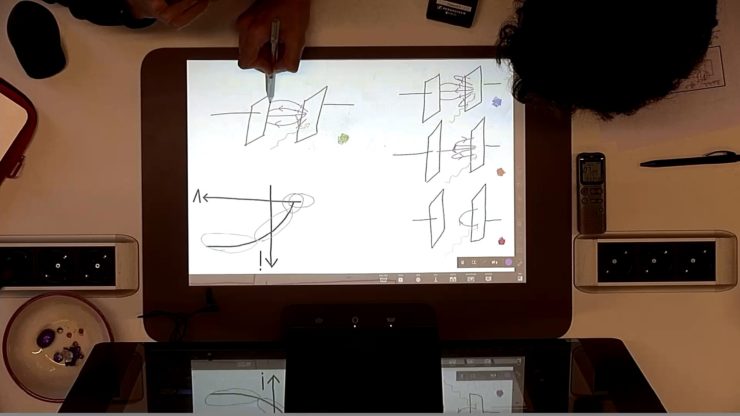Good practices
Student-generated Stop-Motion animation
Mohammadreza Farrokhnia is a physics teacher, working for the Iranian ministry of education, and PhD candidate at Tarbiat Modares university of Tehran. His research focuses on effective physics teaching and learning strategies in the field of educational technology. As part of his PhD program, he is visiting the Freudenthal Institute from July 2018 till September 2019, where he conducts research in the Teaching & Learning Lab on student-generated animation as an approach for learning physics.

Ralph Meulenbroeks, Mohammadreza Farrokhnia, Wouter van Joolingen
Most of Farrokhnia’s research is devoted to designing and developing learning environments for physics education, based on different cognitive tools such as simulations and concept maps, to improve students’ learning about scientific concepts and to foster meaningful learning. At the Freudenthal Institute, he focuses on modeling-based learning, specifically student-generated animation (SGA), under supervision of Professor Wouter van Joolingen and Assistant Professor Ralph Meulenbroeks.
SGA: Theoretical research
 In the first four months of his stay, Farrokhnia conducted a literature review about SGA. Two important outcomes of this theoretical phase are:
In the first four months of his stay, Farrokhnia conducted a literature review about SGA. Two important outcomes of this theoretical phase are:
- Farrokhnia found a promising technique to use for designing and developing an animation by means of simple and generic software: Stop-Motion. This is a technique that involves creating the illusion of motion through the physical manipulation of objects. Incrementally moving an object and photographing individual frames which are then pieced together, creates an illusion of movement.
- There is a lack of experimental research about the utilization of Stop-Motion SGA in higher education for stimulating and fostering domain-general skills, such as mechanistic reasoning. Therefore, Farrokhnia decided to conduct experimental research on this topic.
SGA: Experimental research
Farrokhnia’s research consists of a pilot and a main study. The pilot study was conducted in the beginning of March in the Teaching and Learning Lab (TLL). Four theoretical physics master students working in dyads had to design and develop a Stop-Motion animation about photoelectric effect by using HP-Sprout (a high tech computer device which is located in the lab), following specific steps:
- Doing research
- Writing story boards
- Drawing and modeling
- Putting in narration
Farrokhnia hypothesizes that, by going through these four steps, students’ mechanistic reasoning skills can be improved, and that we can see this in their discussion and behaviors through the developing procedure. The process was recorded with the multiple microphones and cameras available in the TLL, to be analyzed in-depth by him.
In the main study, Farrokhnia will conduct another qualitative experimental research with more master students, while he provides specific scaffoldings at specific times during the four steps (according to the analysis of the pilot study).
Unique features of the TLL
Farrokhnia is very enthusiastic about the facilities of the TLL for his research: “I should confess that the TLL lab – beside the comfortable and convenient environment for engagement and learning – by providing multiple microphones and cameras, gives me the opportunity to conduct a pure qualitative research without making any distraction to the students. The possibility of watching students from different angles, allowed me to stay away from the students’ eyes and let them to behave completely normal as they like to!
The TLL lab contains unique features, my personal favorites are:
- The teaching determines the setting rather than that the setting determines how the teacher will teach, like in usual classrooms. In the pilot study I put and adjusted a table almost in the middle of the room, where five cameras could capture videos from different angles.
- Adjustable high quality cameras with excellent zoom capabilities all around the lab. In the pilot study I needed to capture a video from the HP-Sprout’s drawing pad, and I could adjust a camera totally at the top of the pad and have a close shot of students’ interactions. The important point is that all these possibilities are provided in the lab without making any obstacle or inappropriate / harassing conditions for students. Also, the cameras and microphones were very easy to adjust and use.
- The lab is large enough to conduct a research with a statistically sufficient number of students (maybe 35-40 students).”

Author: Miranda Overbeek (Freudenthal Institute)

